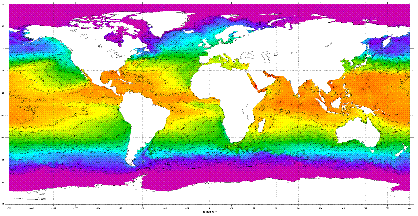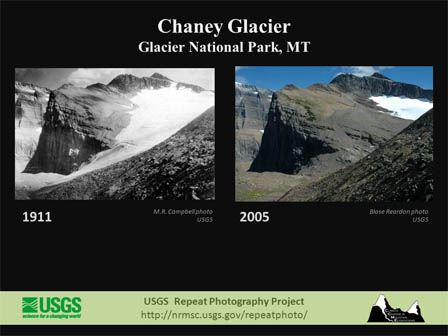Ten signs of a warming world
We hear a great deal about climate change, but what clear evidence demonstrates such change?
It sure has been a long, cold winter this year in Michigan. But the winter of 2011-12 was one of the mildest we’ve ever had, and 2012 was the warmest year on record. What’s going on? If we are experiencing a global warming trend, shouldn’t this winter have been like last?
To answer that question, we need to understand the difference between weather and climate. Weather is not the same as climate, but th ey are directly related. Weather is the state of the atmosphere at any given time and place, while Climate is the set of meteorological conditions that prevail in a particular place or region over a long period of time.
ey are directly related. Weather is the state of the atmosphere at any given time and place, while Climate is the set of meteorological conditions that prevail in a particular place or region over a long period of time.
We must also make the distinctions between climate, climate variability, and climate change. Climate describes how Weather varies at a particular location over a longer period of time. Climate Variability describes fluctuations in the Climate itself over time. These changes are usually natural and brief. Climate Change describes long-term (decades or longer) and persistent changes in earth's Climate.
So what evidence is there for a warming world? The National Oceanic and Atmospheric Administration (NOAA) provides ten indicators:
1) Satellite images show that the area covered by sea ice in the Arctic at the end of summer is getting smaller.
2) Temperature sensors show an increase in heat energy stored in the top half-mile of the ocean.
3) Thermometers on ships and buoys show that the air near the ocean’s surface is getting warmer, increasing its ability to evaporate water.
4) Satellites and thermometers on ships and buoys show the temperature of ocean surface water is rising.
5) Satellites show that the global sea level is rising.
6) Measurements from weather stations over land and water show increasing humidity – more water vapor in the air.
7) Weather stations on land show the average air temperature at the surface is increasing.
8) Measurements from satellites show that the lowest layer of the atmosphere – where we live, airplanes fly, and weather occurs – is warming.
9) Satellite images show the area of land covered by snow during spring in the Northern Hemisphere is declining.
10) Historical photographs show that most mountain glaciers are melting.
 Perhaps the easiest indicator for most people to relate to is #10 above. The United States Geological Survey reports that only 26 of the named glaciers in Glacier National Park presently exist out of the 150 glaciers present in 1850, and those that do are much smaller their original size. The United States Geological Survey funded a study, which projected that all glaciers in the Blackfoot–Jackson Basin of Glacier National Park would disappear by the year 2030 if current climatic trends were to continue. It also predicted that even if no additional climatic forcing occurred, the glaciers would be all be gone by the year 2100 (Hall and Fagre 2003).
Perhaps the easiest indicator for most people to relate to is #10 above. The United States Geological Survey reports that only 26 of the named glaciers in Glacier National Park presently exist out of the 150 glaciers present in 1850, and those that do are much smaller their original size. The United States Geological Survey funded a study, which projected that all glaciers in the Blackfoot–Jackson Basin of Glacier National Park would disappear by the year 2030 if current climatic trends were to continue. It also predicted that even if no additional climatic forcing occurred, the glaciers would be all be gone by the year 2100 (Hall and Fagre 2003).
Michigan State University Extension and Michigan Sea Grant are actively working to help Michigan residents, businesses and communities understand the facts of climate change, the likely effects of such changes, and how best to mitigate potential negative impacts.
This article was adapted from Ten Signs of a Warming World (NOAA, 2009).



 Print
Print Email
Email



